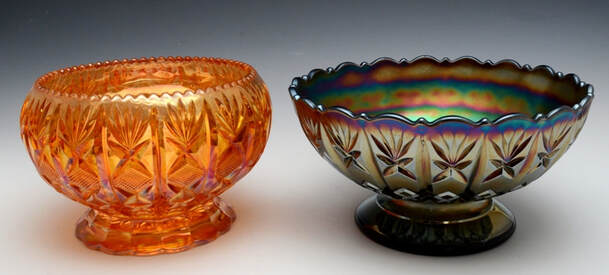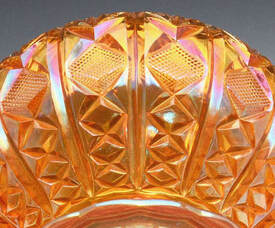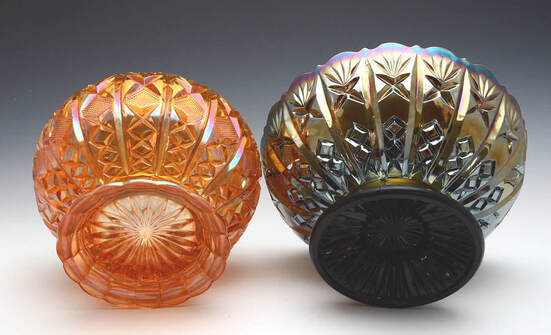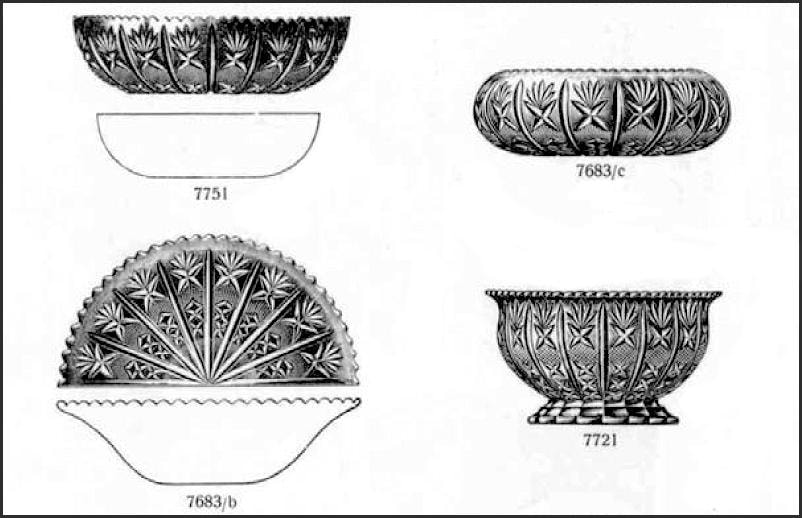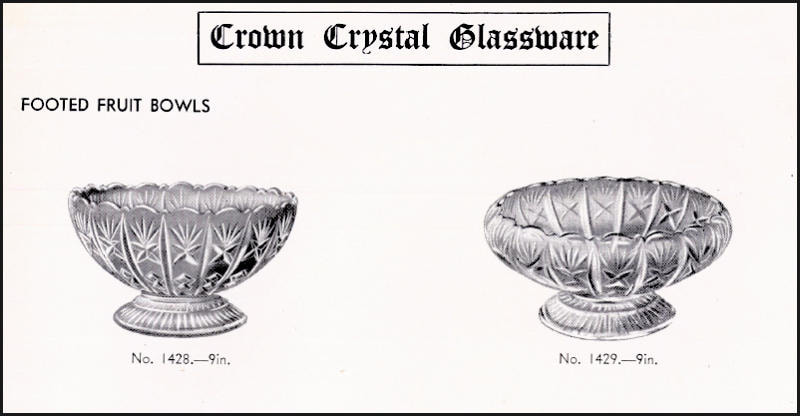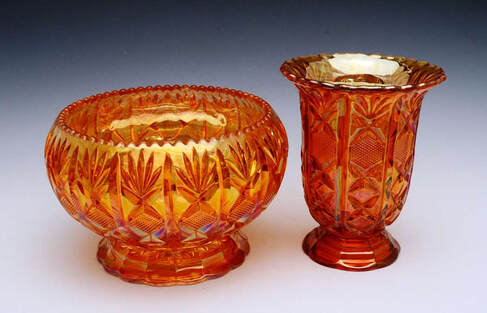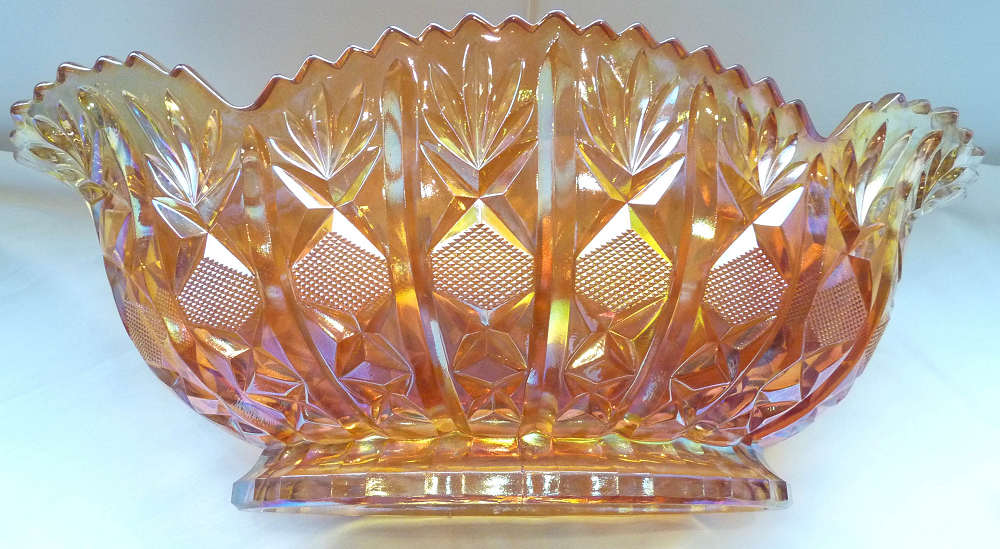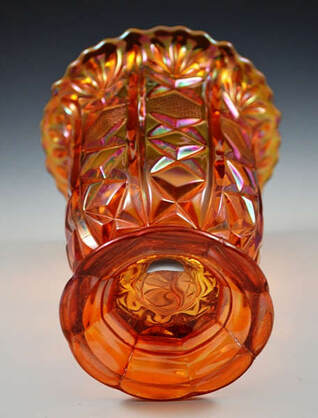Diamond Cut - Part One. Inwald and Crown Crystal.
With grateful thanks to Neil Ritchie for his photos.
Inwald on the left (approx. 8” diameter), Crown Crystal on the right (approx. 9” diameter). Photo courtesy Neil Ritchie.
A selection of shapes in this pattern, including bowls, comports and vases, was illustrated in the Inwald 1928 catalogue. Only known in high-quality marigold, these Inwald items usually have a mirror-shiny polished base, which helps to attribute them.
The 1932 Crown Crystal catalogue shows two footed fruit bowls in this pattern (number 1428 and 1429). Both are known in marigold and “dark” (purple or black amethyst).
The 1932 Crown Crystal catalogue shows two footed fruit bowls in this pattern (number 1428 and 1429). Both are known in marigold and “dark” (purple or black amethyst).
|
The different top edges and bases are enough to tell the two apart, but the clearest and most striking difference is in the pattern itself. Below the top cross on the Inwald version, there is a “cut” file diamond shape. This is absent on the Crown Crystal version. The lower motifs also differ significantly - see photo below. A closer look at the Inwald piece, courtesy Neil Ritchie.
|
Inwald on the left, Crown Crystal on the right. Photo courtesy Neil Ritchie.
|
The bases of the two versions show the differences very well. Note the scalloped edge on the Inwald vase, which is domed up inside.
Also, look closely at the lower motifs too. The Crown Crystal ones are three simple diamond shapes. The Inwald ones have an upward pointing cross at the top, which is topped with the “cut” file shown above.
The bases of the two versions show the differences very well. Note the scalloped edge on the Inwald vase, which is domed up inside.
Also, look closely at the lower motifs too. The Crown Crystal ones are three simple diamond shapes. The Inwald ones have an upward pointing cross at the top, which is topped with the “cut” file shown above.
It’s also interesting to compare the catalogue illustrations, below - the differences in pattern and shape between the two makers are very evident.
Other shapes in Diamond Cut known to be made by Inwald include the celery and jardinière.
|
Above: the marigold iridescence on these two Diamond Cut pieces from Inwald (large rose bowl and celery) is astonishingly vibrant and top quality.
Photo courtesy Neil Ritchie. |
Base of the celery, courtesy Neil Ritchie.
Left: a jardiniere, known in two sizes, 15” and 20” across.
The example above is the largest size and has a shimmering, pastel iridescence. Photo courtesy Stephen Thistlewood. |
In Part Two, we will look at other shapes and other makers of the Diamond Cut pattern. Coming Soon.
See more Collectors Facts
